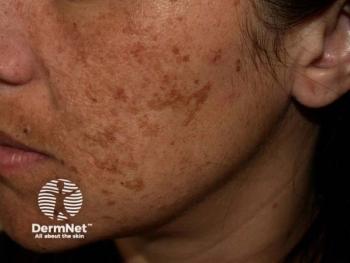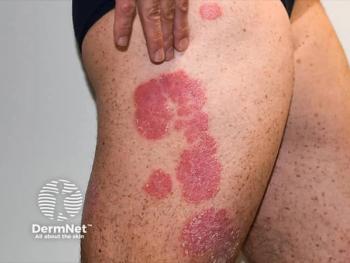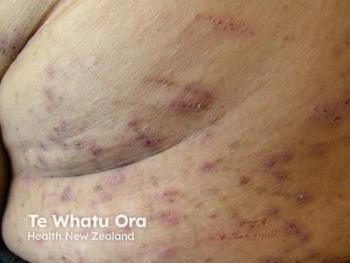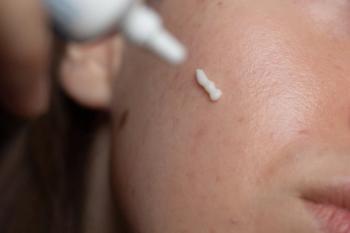
Journal Digest: July 9, 2025
Key Takeaways
- Photodynamic therapy enhances anti-tumor immunity but may induce systemic immunosuppression; acid sphingomyelinase inhibitors could improve therapeutic responses.
- High-frequency ultrasound shows high specificity in tumor margin assessment, potentially reducing re-excisions in dermato-oncology.
This review of the latest dermatologic studies includes insights into immunomodulatory effects of photodynamic therapy for skin cancer, in vivo and ex vivo sonographic evaluation of tumor margins, and more.
Photochemistry and Photobiology: Immunomodulatory effects of photodynamic therapy for skin cancer: Potential strategies to improve treatment efficacy and tolerability
A recent invited review explored how photodynamic therapy (PDT) modulates immune responses in skin cancer. The authors examined emerging evidence showing that PDT triggers both local and systemic immune effects, enhancing antitumor immunity through T-cell activation and immune cell infiltration but also inducing systemic immunosuppression via microvesicle particle release. The review highlighted the potential of acid sphingomyelinase inhibitors to block immunosuppressive pathways, opening the door to more durable therapeutic responses.1
Journal der Deutschen Dermatologischen Gesellschaft: In vivo and ex vivo sonographic evaluation of tumor margins during micrographic-controlled surgery: A promising new tool in dermato-oncology?
A retrospective study evaluated the use of high-frequency ultrasound (HFUS) for tumor margin assessment during micrographic-controlled surgery in patients with nonmelanoma skin cancers of the head and face. Among 136 tumors assessed in vivo and ex vivo using HFUS, the technique achieved 89% concordance with histology in identifying tumor-free margins. HFUS demonstrated high specificity (> 98%) for both basal cell carcinoma and squamous cell carcinoma and successfully identified all cases of cartilage or muscle infiltration. HFUS showed potential to reduce the need for multiple re-excisions, shorten hospitalization, and improve surgical planning in dermato-oncology.2
Pigment Cell & Melanoma Research: Epidermotropic Metastatic Melanoma Presenting as Eruptive Primary Melanomas
A case report highlights the diagnostic challenges of epidermotropic metastatic melanoma (EMM). In this case, a patient presented with numerous superficial spreading melanomas in rapid succession, initially believed to be distinct primaries. However, next-generation sequencing revealed 14 conserved somatic mutations across multiple lesions, confirming their clonal origin and supporting a revised diagnosis of stage IV EMM. Transitioning treatment from nivolumab to encorafenib plus binimetinib led to disease stabilization, with no new skin lesions or internal metastases observed over 2 years.3
Experimental Dermatology: Precision at the Cutting Edge: Ex Vivo Confocal Microscopy for Perioperative Tumour Thickness Assessment in Melanoma
A recent study evaluated the accuracy of ex vivo confocal laser microscopy (EVCM) in measuring tumor thickness during melanoma surgery, offering a potential tool for rapid intraoperative decision-making. Researchers analyzed 27 histopathologically confirmed melanomas across various body sites using both EVCM and traditional histology. Tumor thickness measurements, such as confocal tumor thickness and histopathologic tumor thickness, were highly correlated.4
Experimental Dermatology: Enhancing Early Detection of Metastatic Cutaneous Squamous Cell Carcinoma (CSCC): Integrating AI With Histopathological Assessments
A recent study explored the use of artificial intelligence (AI) to improve risk stratification in patients with cutaneous squamous cell carcinoma. Researchers applied a multistep convolutional neural network to hematoxylin and eosin slides, aiming to identify histopathologic features linked to metastatic potential. In a nested case–control design involving 374 patients, AI-derived variables such as tumor area and nuclei density were combined with traditional dermatopathologist-scored features. The integrated model achieved a high concordance index, outperforming models using either approach alone. AI-derived nuclei density and tumor area emerged as significant predictors of metastasis, complementing expert-assessed metrics like tumor diameter and differentiation.5
References
- Ortenzio MP, Anand S, Travers JB, Maytin EV, Rohan CA. Immunomodulatory effects of photodynamic therapy for skin cancer: potential strategies to improve treatment efficacy and tolerability. Photochem Photobiol. Published online July 4, 2025.
doi:10.1111/php.70008 - Crisan D, Wortsman X, Alfageme F, et al. In vivo and ex vivo sonographic evaluation of tumor margins during micrographic-controlled surgery: a promising new tool in dermato-oncology? J Dtsch Dermatol Ges. Published online July 2, 2025.
doi:10.1111/ddg.15827 - Strong J, Winkie MJ, Hallaert P, et al. Epidermotropic metastatic melanoma presenting as eruptive primary melanomas. Pigment Cell Melanoma Res. Published online July 4, 2025.
doi:10.1111/pcmr.70037 - Hartmann D, Swarlik A, Buttgereit L, et al. Precision at the cutting edge: ex vivo confocal microscopy for perioperative tumour thickness assessment in melanoma. Exp Dermatol. Published online July 1, 2025.
doi:10.1111/exd.70136 - Bramer EM, Chia C, Rentroia-Pacheco B, et al. Enhancing early detection of metastatic cutaneous squamous cell carcinoma (CSCC): integrating AI with histopathological assessments. Exp Dermatol. Published online July 4, 2025.
doi:10.1111/exd.70135
What new studies have you been involved with or authored? Share with us by emailing
Newsletter
Like what you’re reading? Subscribe to Dermatology Times for weekly updates on therapies, innovations, and real-world practice tips.


















